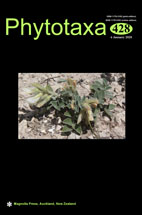Abstract
Rosa × archipelagica is a spontaneous hybrid between Rosa rugosa and R. maximowicziana distributed, together with its parental taxa, on the coast of a small Stenina Island in the Peter the Great Gulf, the Sea of Japan (Russian Far East). Its hybrid origin is confirmed by direct electropherogram comparisons of PCR products and maximum likelihood analyses of nuclear ITS 1–2 and plastid intergenic spacers trnH–psbA and ndhC–trnV. The plastome markers indicate R. maximowicziana as the maternal genome donor of Rosa × archipelagica, however, one specimen shows also signs of heteroplasmy. This is the first evidence of possible biparental inheritance of plastids in rose hybrids. The results do not show whether the hybrid plants all belong to F1 or further generations of hybrids.

